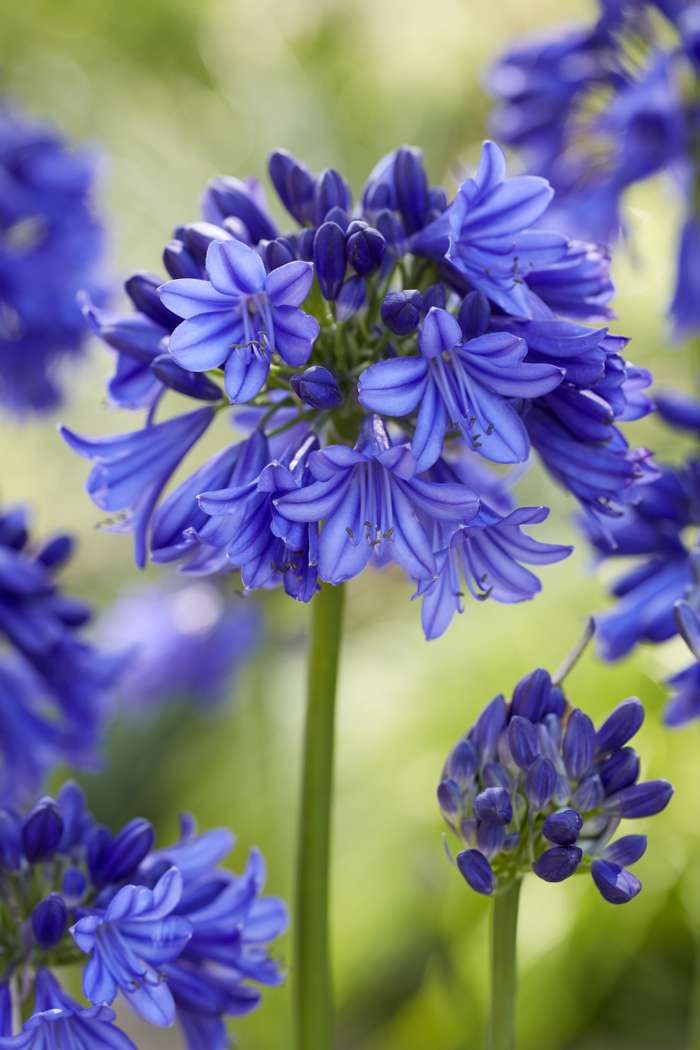Unleashing the Secret to Effective Agapanthus Farming: Idea for a Flourishing Yard
In the world of gardening, cultivating agapanthus effectively needs a calculated technique that includes various aspects of plant treatment. With cautious attention to detail, one can open the keys to supporting these stunning blooms, leading to a garden that flourishes with appeal and vibrancy. By comprehending the nuances of agapanthus growing, one can create an environment where these plants grow and grow abundantly. In the adhering to conversation, we will certainly discover crucial pointers and techniques that will guide you in the direction of a growing agapanthus yard, supplying understandings into ideal practices, soil conditions, sprinkling methods, and more.
Growing Agapanthus: Finest Practices
When planting Agapanthus, proper dirt prep work is essential for making sure effective growth and growth of these gorgeous blossoms. Agapanthus, commonly known as Lily of the Nile or African lily, grows in well-draining soil with a somewhat acidic to neutral pH level - Agapanthus. Prior to growing, it is essential to change heavy clay soils with raw material such as compost or peat moss to enhance drain and give important nutrients for the plants
To plant Agapanthus, pick a location that gets complete sunshine to partial color, as this will promote healthy and balanced growth and plentiful blooming. Dig an opening two times the diameter of the plant's root round and position the Agapanthus at the same deepness it was previously growing. Gently backfill the opening with dirt, pushing down securely to eliminate any kind of air pockets around the origins.
Water the freshly planted Agapanthus thoroughly and continue to keep the soil uniformly damp, specifically throughout the plant's energetic expanding season. Agapanthus. Applying a balanced fertilizer once a month can better sustain the plant's growth and flowering. By following these finest methods for growing Agapanthus, you can develop a magnificent display of these captivating flowers in your garden
Perfect Soil Conditions for Agapanthus
For optimum growth and blooming success of Agapanthus plants, ensuring the dirt problems are suitable is essential. Agapanthus favors dirt that is rich in nutrients, so including a well balanced fertilizer during the expanding season can advertise healthy and balanced development and lively flowers.

Watering and Feeding Tips
To make certain healthy and balanced development and dynamic blooms, check proper watering and feeding methods are essential for successful Agapanthus farming. Agapanthus plants benefit from regular watering, specifically throughout the expanding period.
When it involves feeding Agapanthus, a balanced fertilizer with equivalent components nitrogen, phosphorus, and potassium can be used in the springtime to advertise healthy and balanced development and flowering. Slow-release plant foods are optimal for providing nutrients gradually over an extended period. Avoid over-fertilizing, as this can bring about extreme foliage development at the expense of blossoms.
In addition, including natural issue like compost right into the soil can boost nutrient levels and boost soil framework, aiding in the total health of the Agapanthus plants. By following these watering and feeding tips, gardeners can ensure their Agapanthus plants prosper and produce magnificent screens of blossoms.
Pruning and Deadheading Strategies
Proper trimming and deadheading techniques play a vital role in keeping the health and appearances of Agapanthus plants, matching the essential methods of watering and fertilizing for effective growing. Trimming Agapanthus involves eliminating invested blossom heads, yellowing or dead fallen leaves, learn this here now and overall shaping of the plant to advertise better growth. Deadheading, the procedure of removing faded blossoms, not just enhances the plant's look yet also motivates additional growing.
When deadheading Agapanthus, it is recommended to clip off the blossom stem at the base making use of sharp, tidy shears. This procedure redirects the plant's energy from seed manufacturing back right into origin and foliage growth, promoting a much healthier and extra robust plant. Regular deadheading can prolong the flowering period of Agapanthus and protect against self-seeding, which can lead to congestion.
In terms of pruning, Agapanthus typically benefits from a light trim after blooming to clean the plant and motivate fresh growth. Cutting back the spent blossom stems and eliminating any type of damaged or dead foliage aids keep the plant's vitality and total look. Nonetheless, it is necessary to stay clear of reducing into the crown of the plant, as this can compromise its health.

Protecting Agapanthus From Vermins and Diseases
Executing reliable parasite and illness management approaches is important to securing the health and vitality of Agapanthus plants in growing. One typical insect that impacts Agapanthus is the Agapanthus borer, a caterpillar that tunnels right into the plant, creating damages to the fallen leaves and flowers.
In enhancement to bugs, Agapanthus are vulnerable to conditions such as origin rot and fungal fallen leave places. By remaining attentive and attending to bug and illness problems without delay, garden enthusiasts can aid their Agapanthus prosper and grow.

Conclusion
Finally, effective cultivation of agapanthus needs correct planting methods, excellent soil conditions, ample watering and fertilizing, routine trimming and deadheading, and defense from insects and illness. By complying with these tips and techniques, gardeners can make sure a prospering yard filled with stunning agapanthus flowers. Agapanthus. Remember to preserve constant treatment and focus to information to advertise the wellness and longevity anchor of these spectacular plants
When planting Agapanthus, appropriate dirt preparation is important for making sure effective development and advancement of these lovely blossoms.Water the freshly grown Agapanthus thoroughly and proceed to keep the soil uniformly damp, particularly during the plant's active growing season.For optimal development and flowering success of Agapanthus plants, guaranteeing the soil problems are optimal is critical. When planting or transplanting Agapanthus, make certain the soil is well-prepared to give the required structure for the plants to establish themselves effectively. One typical pest that impacts Agapanthus is the Agapanthus borer, a caterpillar that passages into the plant, causing damage to the fallen leaves and blossoms.
Comments on “Agapanthus Buddy Plant Kingdoms: Perfect Pairings for Your Yard”